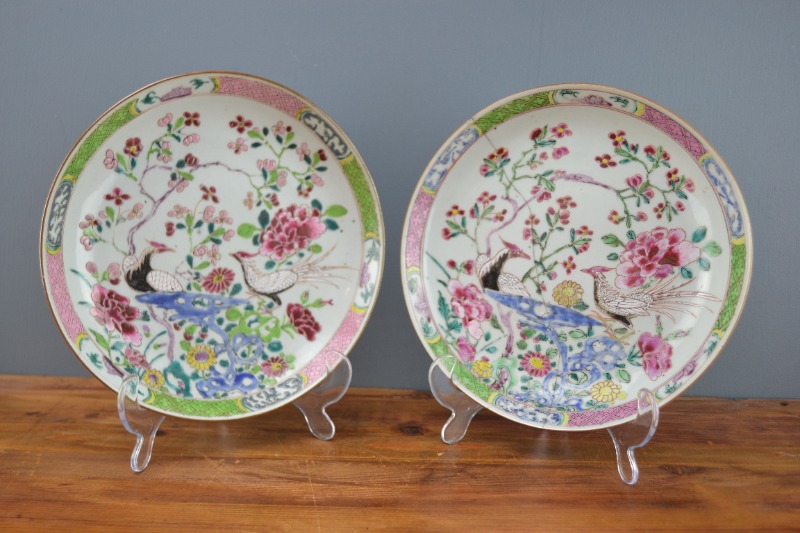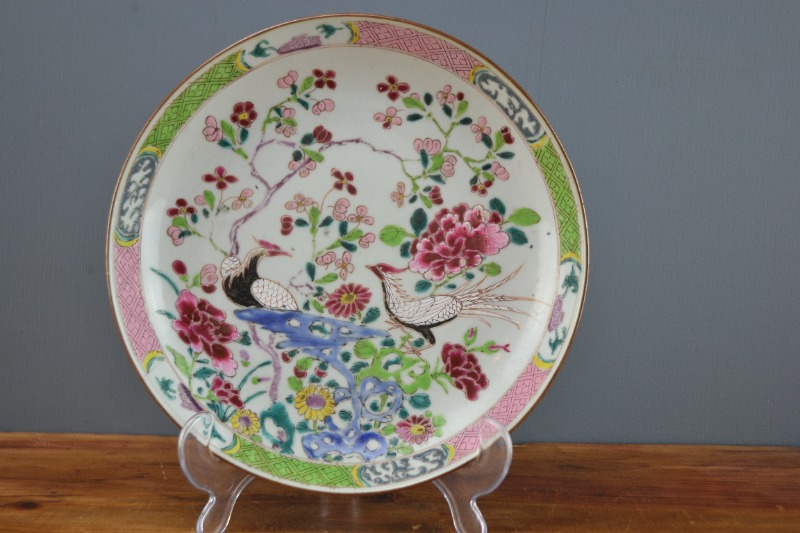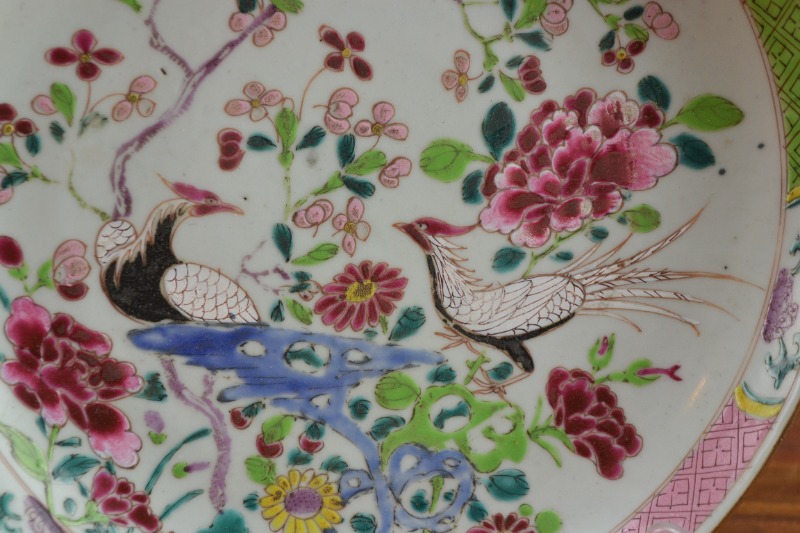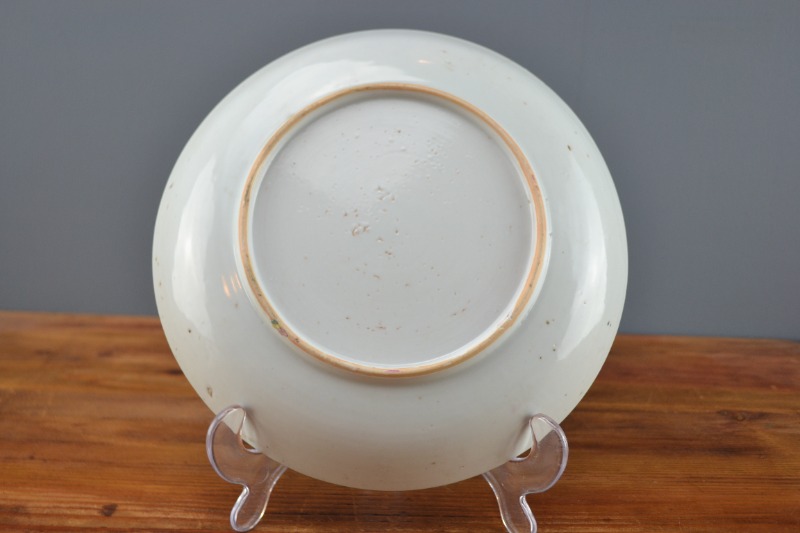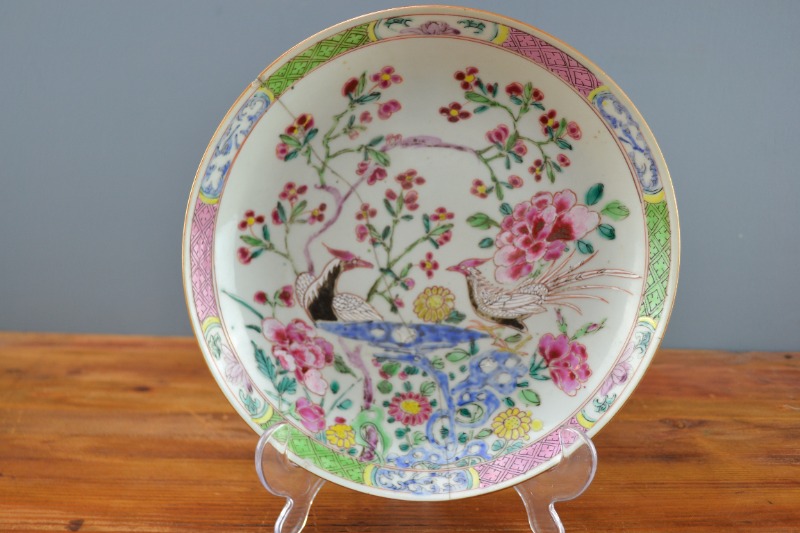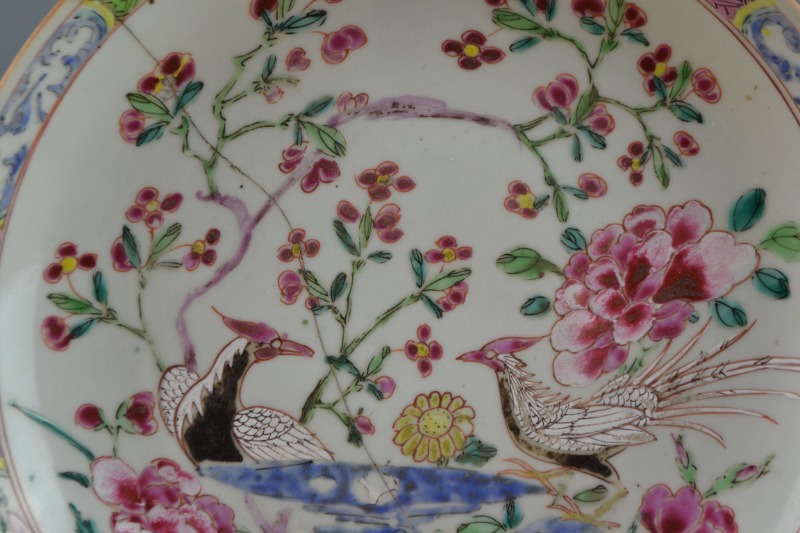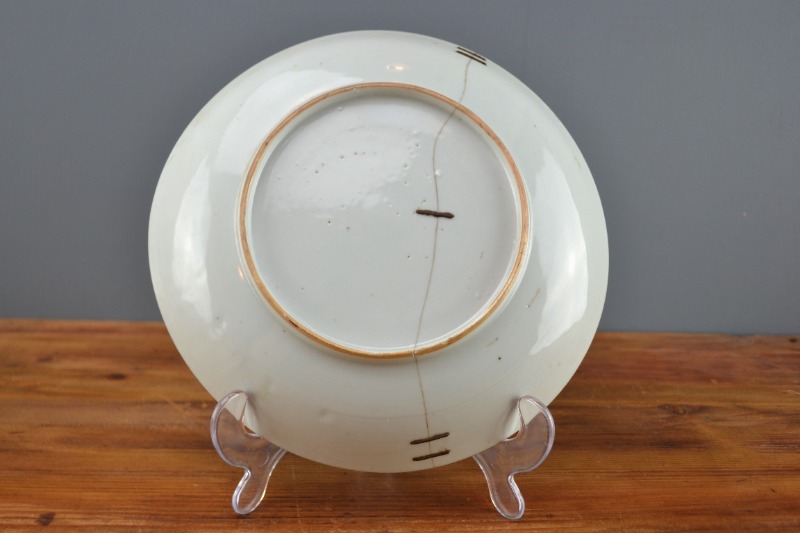Pair of Famille Rose Pheasant Plates, Yongzheng/ early Qianlong period, 1723-1750
Age:
early Qianlong period, 1723-1750
Material:
Porcelain
Dimensions:
Diameter 22cm
Shipping:
Standard Parcel
Price:
SOLD
Pair of famille rose plates with pheasants on rocks amidst blossoms, chrysanthemums and peonies. The thick opaque carmine red and while flowers and pink border would usually date this to Yongzheng (1723-35), although the absence of back decoration could make it a few years later. The typical straw foot rim and blue tinged glaze point to manufacture in the second quarter of the 18th century.
One plate has a small hairline to the edge. The other has been broken through the middle with a historical staple repair. The enamels are in good, unrubbed condition. As is usual with Chinese export porcelain, it is unmarked.
Famille-rose refers to Chinese porcelain decorated with predominantly pink coloured enamel, made from colloidal gold. These colours were known to the Chinese as yangcai ("foreign colours") because they were first introduced from Europe around 1685. These enamels, primarily an opaque red, pink and white, became available to the Imperial factory from around 1710. They were used on private factory porcelain from the early 1720s, making these plates early examples.
The pheasant is one of the twelve Chinese imperial symbols and represents the natural world and purity and brightness.

